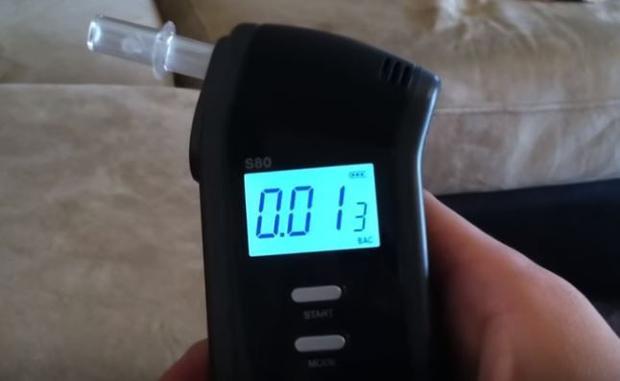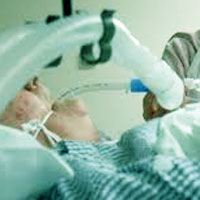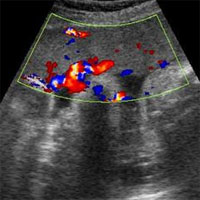Stories Category: Intensive Care

Magnet guidance reduces misplacement of subclavian vein catheter in internal jugular vein
The internal jugular vein (IJV) and subclavian vein (SCV) are the two most commonly used insertion sites for central venous catheterization (CVC). A multicenter clinical trial compared commonly used insertion sites and... read more

WHO Calls for Stronger Avian Influenza Surveillance
With highly pathogenic strains of avian influenza A (H5N8) continuing to spread via birds across Europe, the World Health Organization (WHO) is urging the public to keep careful watch on this strain and has also called for... read more

Nutrition in critically ill adults: A systematic quality assessment of clinical practice guidelines
Nutritional support in the acutely ill is a complex topic. Clinical practice guidelines (CPGs) have been developed to assist healthcare professionals working in this field. However, the quality of these clinical guidelines... read more

Better glycemic control with continuous glucose monitoring
This randomized clinical trial compares the effects of continuous glucose monitoring vs conventional treatment for glycemic control in adult patients with type 1 diabetes treated with multiple daily insulin injections.... read more

Findings do not support early tracheal intubation for in-hospital cardiac arrest in adults
Decreased survival to hospital discharge was found with the initiation of tracheal intubation compared with no intubation in adult patients experiencing in-hospital cardiac arrest when the tracheal intubation was initiated... read more

Four ways to reduce dangerous medical errors at your hospital
It's human nature, everyone makes mistakes. But the consequences of those mistakes can range wildly not only according to their severity, but also depending on who commits them. When a marketer makes a typo on a press release,... read more

SOFA score may be best to identify sepsis in the ICU
Among critically ill patients admitted to the ICU with a suspected infection, defining sepsis by an increase of two or more points in the Sequential Organ Failure Assessment (SOFA) score yielded greater prognostic accuracy... read more

New Infection Data and Sepsis-Guideline Critique at SCCM
The potential of probiotics to reduce nosocomial infections and ventilator-associated pneumonia in the critically ill and the latest data on readmissions will be among the major research advances presented here at the Society... read more

Prominent clinical guidelines fall short of conflict of interest standards
Two recent clinical practice guidelines, one for cholesterol management and another for treatment of chronic hepatitis C, did not meet the Institute of Medicine's standards for limiting commercial conflicts of interest, according... read more
Bad news for sepsis-3.0: qSOFA fails validation
Sepsis 3.0 replaced the SIRS criteria with a new risk-stratification tool, qSOFA. qSOFA was initially developed within the Sepsis-3 publication itself. Until now, qSOFA has never been validated. The value of qSOFA vs. SIRS... read more

Liberation from Mechanical Ventilation in Critically Ill Adults
Official Executive Summary of an American Thoracic Society/American College of Chest Physicians Clinical Practice Guideline: Liberation from Mechanical Ventilation in Critically Ill Adults. The panel provides recommendations... read more
Which Physicians Are the Happiest?
This year's lifestyle survey, as in previous ones, asked whether physicians were happy at home or at work. Of physicians who said they were either very or extremely happy at work, dermatologists and ophthalmologists... read more

Critical care ultrasonography in acute respiratory failure
CCUS combining CCE and chest ultrasonography rapidly provides valuable information in patients presenting with ARF. A pragmatic and systematic applied protocol may first evaluate how aerated is the lung and whether there... read more

Effect of Omega 3 polyunsaturated fatty acids in major burn patients
The inclusion of ω-3 PUFAs in a low fat diet in ICU burned patients was associated with significant clinical benefits compared to a conventional low fat diet, with lower rates of severe sepsis, septic shock and pyloric dysfunction.... read more

Impact of transfusion on patients with sepsis admitted in ICU
Red blood cell transfusion (RBCT) threshold in patients with sepsis remains a matter of controversy. A threshold of 7 g/dL for stabilized patients with sepsis is commonly proposed, although debated. The aim of the study was... read more

Towards precision medicine for sepsis patients
Over the last decade it has become clear that the immunological response and clinical course in sepsis patients is too complex to simply regard it as hyperinflammation-induced organ failure. In contrast to the previous belief... read more

Acetaminophen, Among Other Medications, Triggers Drug-Induced Liver Injury
More than 1,000 medications, with acetaminophen being the most common, have been associated with drug-induced liver injury (DILI). Diagnosis can be challenging due to the multitude of contributing factors, and timely recognition... read more








